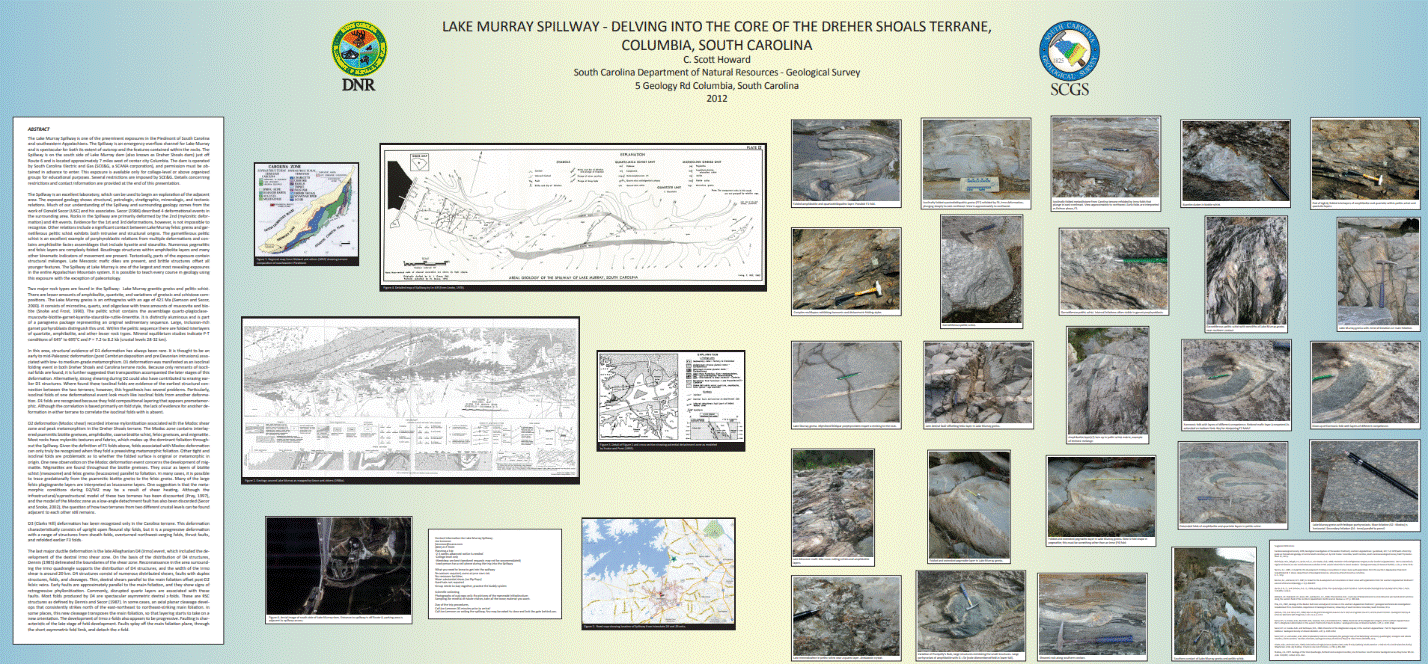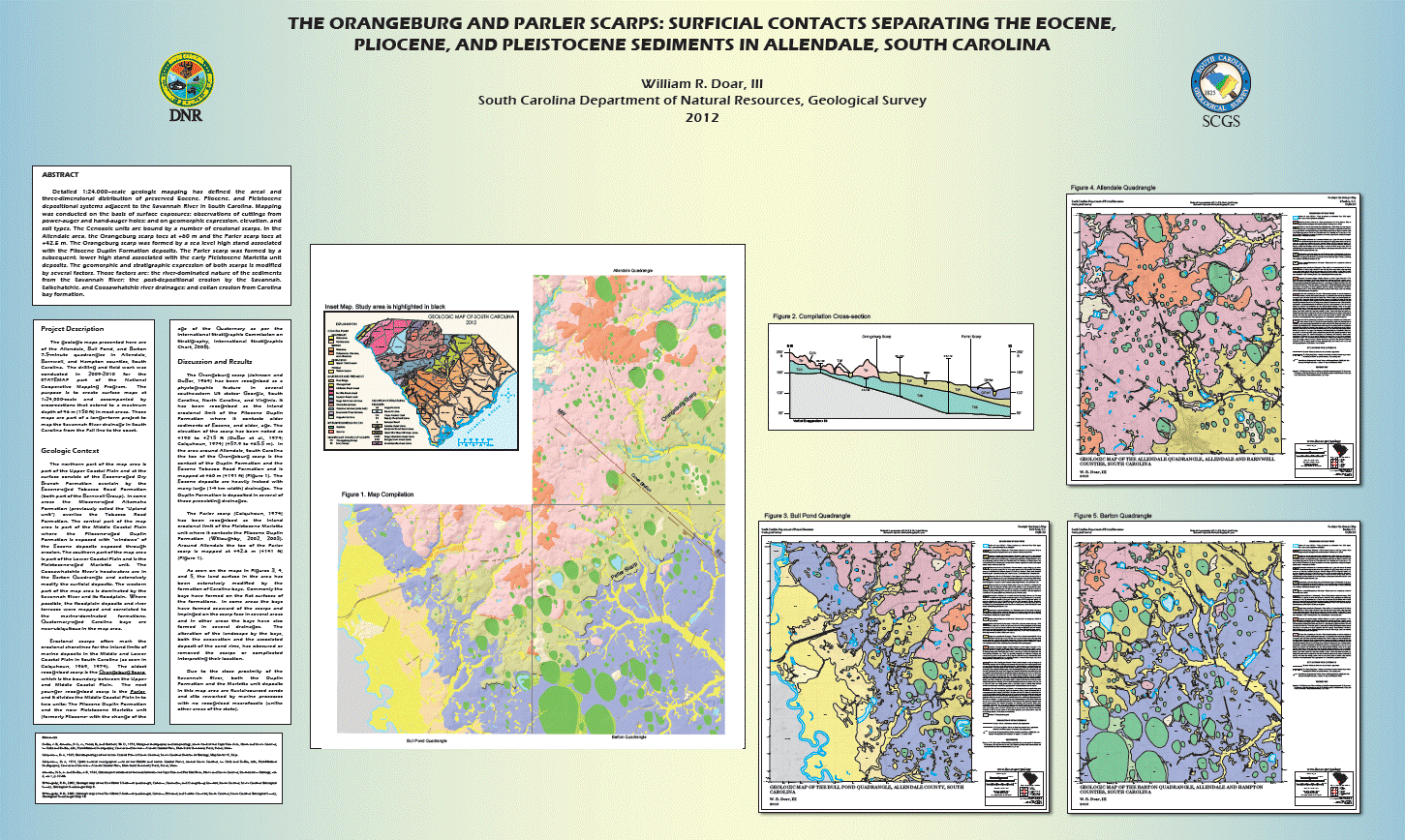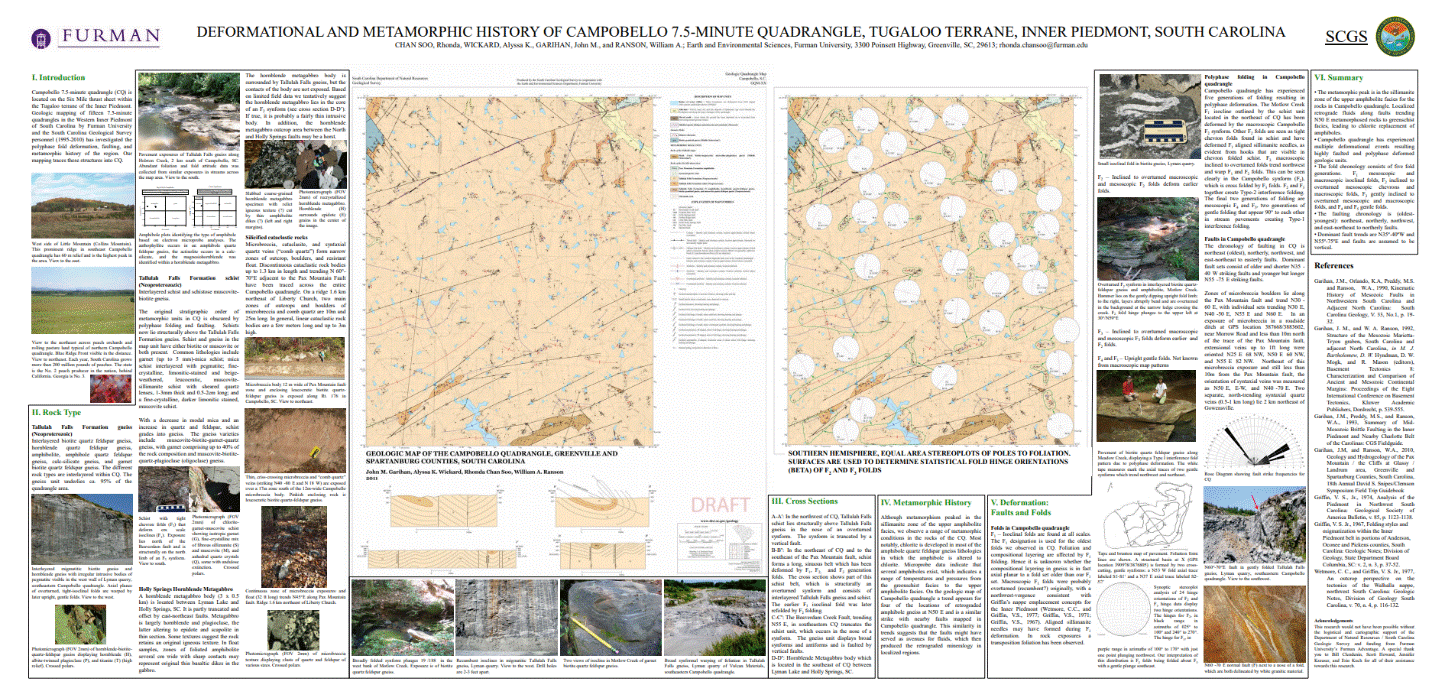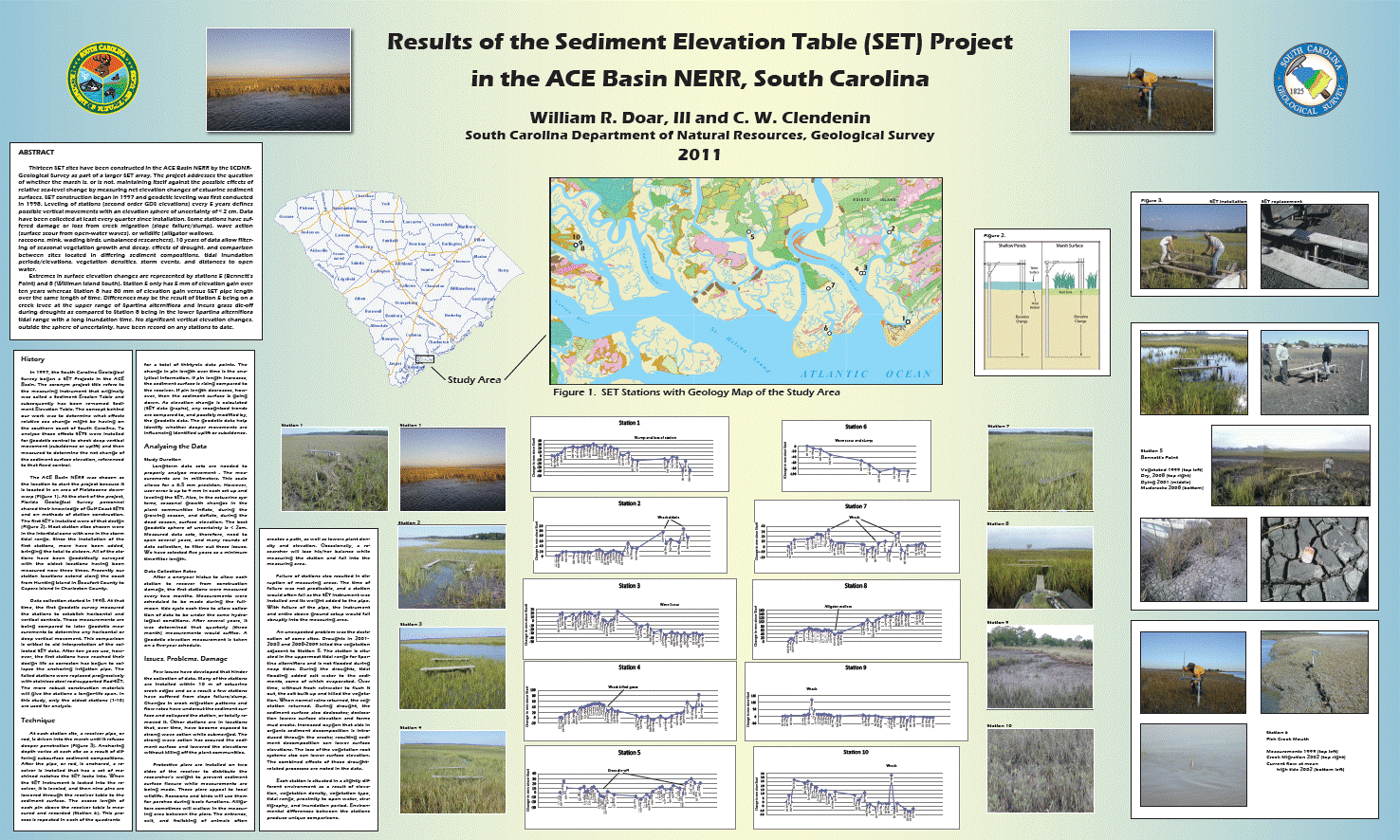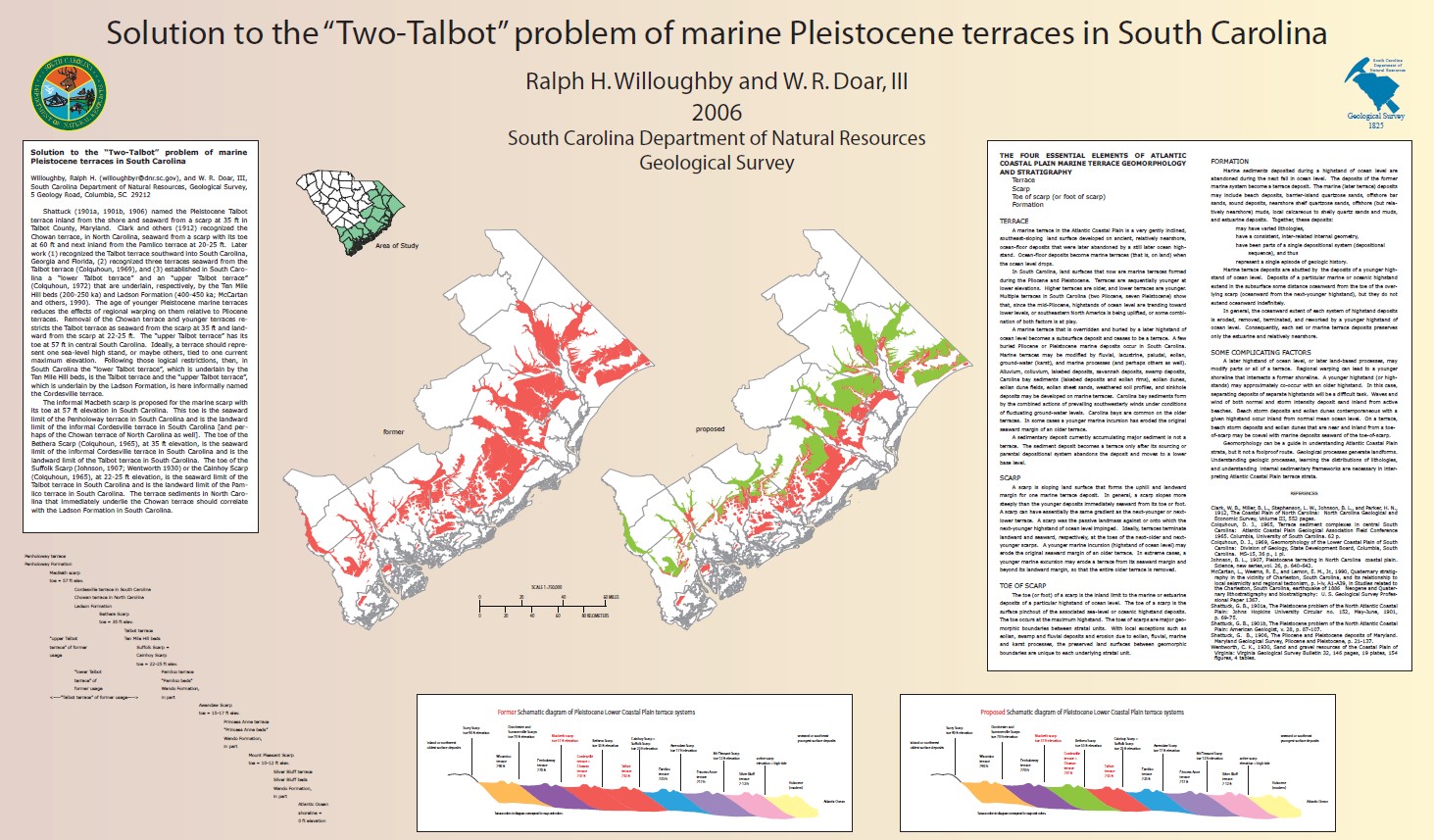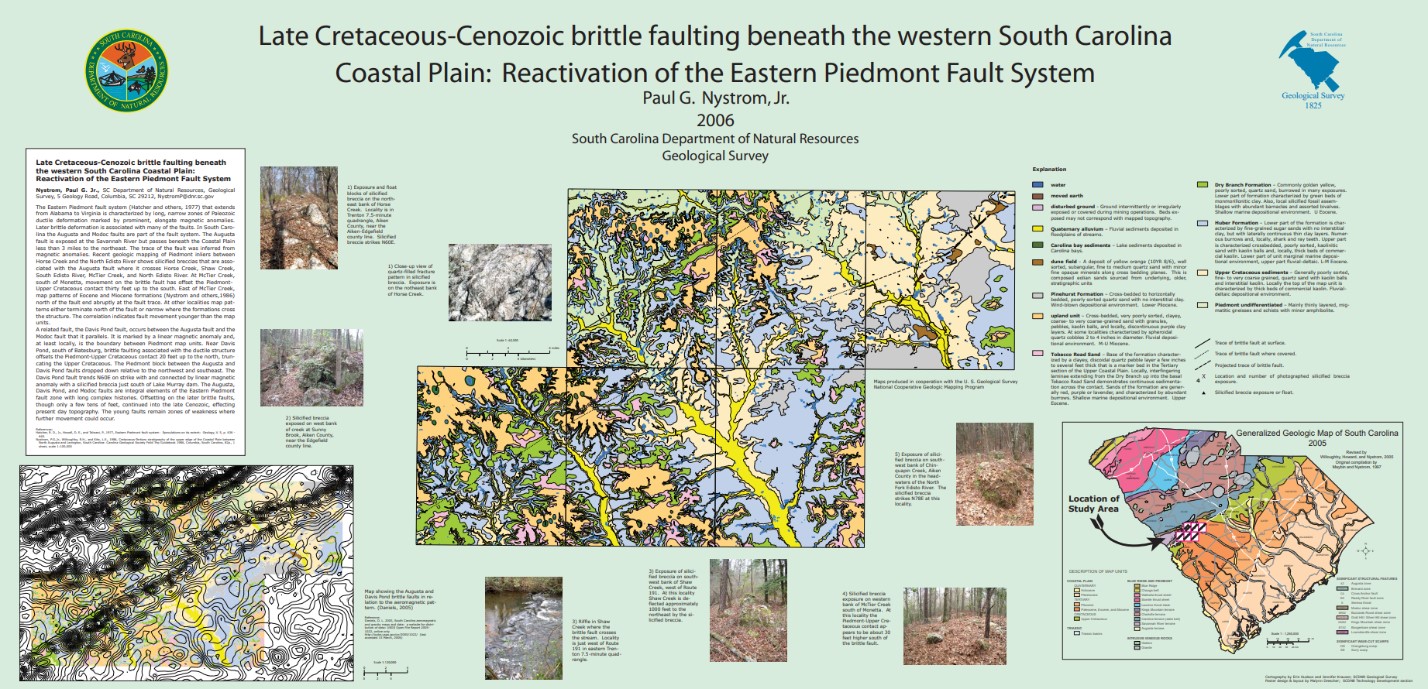Overview
The following posters and slideshows were presented by South Carolina Geological Survey geologists and/or their students. The posters are available for download in PDF format. Most files are fairly large.
Visit the Southeastern Section here.
